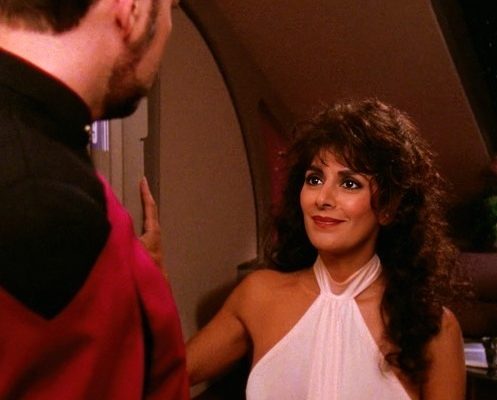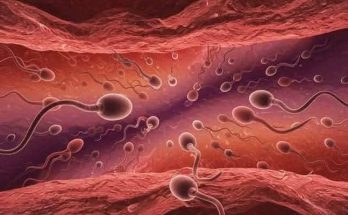Star Trek: The Next Generation (TNG) was more than just a sci-fi series—it was a revolutionary show that influenced the future of TV. Debuting in 1987, it transformed the genre with its mix of smart storytelling, complex moral questions, and advanced technology. Throughout its seven seasons, it engaged viewers, and when it concluded in 1994, over 30 million fans tuned in to bid farewell.
However, even if you’ve seen every episode countless times, TNG is packed with hidden details, Easter eggs, and behind-the-scenes insights that many fans overlook. Let’s explore some of the most intriguing elements of the series that you might have missed.
The Enterprise-D Had a Different Look in Mind
The USS Enterprise-D is one of the most legendary starships in sci-fi, but did you know its design underwent major changes before we got the final version? The initial concept art featured a much sleeker, almost aerodynamic appearance, which was later altered to include the recognizable saucer section and secondary hull.
Moreover, the bridge of the Enterprise was intended to resemble a meeting room rather than a typical spaceship command center. Unlike the original Star Trek, which had a more military-style control room, TNG’s creators aimed for a futuristic environment that embodied diplomacy, exploration, and thoughtful conversation.
Patrick Stewart Didn’t Expect to Stay Long
Captain Jean-Luc Picard, portrayed by Patrick Stewart, became one of the most cherished characters in TV history. However, Stewart originally joined the cast believing the show would only run for one season. He even kept his luggage ready, thinking the series would be canceled.
“I was convinced this show wouldn’t last,” Stewart later confessed in an interview.
Check This Out
12 Celebrities Who’ve Dramatically Changed Over the Years.
June 23, 2025
12 Hidden Interview Traps That Could Cost You the Job Without You Even Knowing It
June 23, 2025
10 Reasons You Might Be Drooling While You Sleep and What It Could Mean.
June 23, 2025
Why using a fan at night can mess with your sleep
June 23, 2025
Fast forward seven years, and Picard had established himself as an iconic character, leading to spin-offs, films, and even a comeback in Star Trek: Picard.
The Show’s Shakespearean Influence Runs Deep
If TNG’s dialogue and themes seem sophisticated, it’s because they were greatly influenced by Shakespearean drama. Patrick Stewart, a trained Shakespearean actor, added a theatrical flair to the character of Picard.
But beyond Stewart, the series frequently referenced Shakespeare directly. Many episode titles draw inspiration from his works, such as:
“Thine Own Self” (from Hamlet)
“All Good Things…” (from King Lear)
“Sins of the Father” (a common Shakespearean theme)
The showrunners viewed Star Trek as more than just space battles—it was a platform for intricate storytelling, much like the works of the Bard himself.
The Holodeck Was a Writer’s Secret Weapon
The holodeck—TNG’s virtual reality room—was an amazing storytelling tool that let writers dive into historical places, alternate realities, and character-focused stories. But its main goal was even more practical: it helped save money.
By placing whole episodes in settings like Sherlock Holmes’ London (Elementary, Dear Data) or a 1940s nightclub (The Big Goodbye), the show could reduce expenses by using existing sets instead of building costly new alien worlds.
The holodeck also allowed characters to delve into profound philosophical questions, like artificial intelligence, identity, and the essence of reality—long before these ideas became popular in sci-fi.
The Klingon Language Was Created for the Show
Before Star Trek: The Next Generation, Klingon was just a few sounds and words. But linguist Marc Okrand created a complete Klingon language just for the franchise.
Fans loved the language, and now, you can actually learn to speak Klingon fluently. There are Klingon dictionaries, language classes, and even Shakespeare plays translated into Klingon.
“To be, or not to be” in Klingon? “taH pagh taHbe’.”
The Borg Were Almost Insects
The Borg, known as one of the scariest villains in Star Trek history, could have looked very different. In the early stages of concept discussions, they were imagined as insect-like beings, similar to a hive race.
But due to budget limitations, they ended up with the now-iconic cybernetic humanoid design. The outcome? A much more frightening enemy that represented the fear of losing one’s individuality to a collective consciousness.
Their famous catchphrase—”Resistance is futile”—has become one of the most quoted lines in the history of sci-fi.
Some Actors Played Multiple Roles Without Fans Noticing
One of the interesting quirks of TNG is that several actors took on multiple roles, and a lot of fans didn’t even catch it.
Jeffrey Combs, who later became a significant character in Star Trek: Deep Space Nine, portrayed various alien roles in TNG before securing a recurring role in the later series.
Marc Alaimo, who is best known as Gul Dukat in DS9, showed up as several different alien characters in TNG.
Majel Barrett, the wife of Star Trek creator Gene Roddenberry, lent her voice to the ship’s computer and also played Lwaxana Troi, Deanna Troi’s quirky mother.
Data’s Cat, Spot, Changed Genders
Lieutenant Commander Data’s cherished cat, Spot, was a favorite among fans. However, if you look closely, Spot is shown as both a male and female cat in various episodes.
In the earlier seasons, Spot was portrayed as a male orange tabby, but later on, the cat is referred to as female—especially during the time she gives birth to kittens. This is a minor continuity mistake that has turned into a fun trivia point among Star Trek enthusiasts.
TNG Set the Stage for Contemporary Sci-Fi TV
The impact of TNG is immense. It wasn’t merely another sci-fi show—it established the benchmark for the genre. Series like Battlestar Galactica, The Expanse, and The Orville all take cues from TNG’s blend of profound storytelling, moral challenges, and intricate characters.
The show’s depiction of the future—where humanity comes together for exploration and advancement—still motivates scientists, engineers, and dreamers globally.
Final Thoughts: The Legacy of TNG Persists
Even years after its conclusion, Star Trek: The Next Generation continues to be a cherished pillar of science fiction. Whether it’s the rich narratives, memorable characters, or the hidden elements waiting to be found, the show still has a lot to give to both old and new fans.
So the next time you tune in to an episode, pay attention to the subtle details and Easter eggs that are interwoven throughout the series. You might just uncover something fresh in the final frontier.



